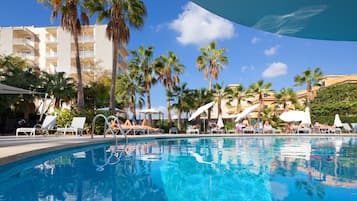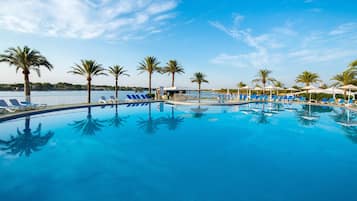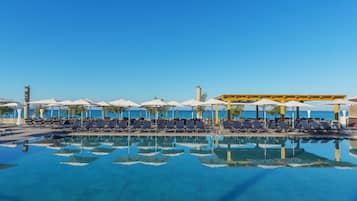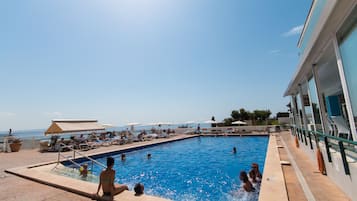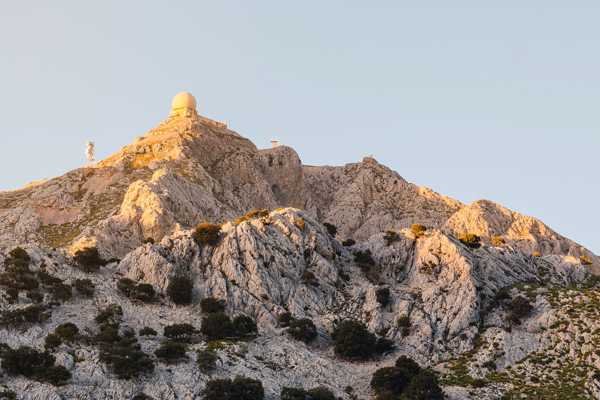The best natural wonders in Mallorca offer ample adventures and photo opportunities. Most visitors to this beautiful Balearic Island know about the glorious beachfronts and coves, which run down Palma Bay and carve into the rocks around Cala d'Or. But the sands and pebbles also give way to lesser-known capes and cliffs, while Mallorca's inland is a wonderworld of soaring mountains and forgotten forests.
Beyond the pumping resort strips of Magaluf and the UNESCO sites of Palma de Mallorca, there are plenty of spots that come courtesy of Mother Nature. Cue this guide, which takes a look at some of the most stunning natural wonders in Mallorca for those looking to ditch the poolside for a touch of adventure.
- 1
Cap de Formentor
A wind-bashed section of wild coastline
- Aventura
- Econômico
- Foto
Leia maisThe Cap de Formentor is the long finger of Mallorca that pokes directly northeast from the very edge of the island. The gateway to it all is the pretty town of Port de Pollença, which ends abruptly at a phalanx of craggy hills that mark the point where the great Serra de Tramuntana ranges crash into the Mediterranean.
The best way to explore the area is by car. There are winding, zigzagging roadways that weave through the carob trees and Aleppo pines, opening onto deep-cut bays and empty inlets. Keep the photoshoot for the Far de Formentor, a lighthouse where Eleonora's falcons skirt the coast and there are views across to Menorca in the east.
Mapa - 2
Es Trenc
Where Mallorca's coastline comes centre stage
- Aventura
- Econômico
- Foto
Leia maisEs Trenc is a glorious showcasing of just how good Mallorca's beaches can be. It runs for a whopping 4 km between small Ses Covetes and the boat-bobbing harbours of Colònia de Sant Jordi, gilding the south-western shoreline of the island with sands of such perfect white that they'd look right at home in the Caribbean.
And it's not just the sands that have a tropical vibe about them. Everything from the crystal-clear blue waters to the chilled chiringuito beach bars oozes peace and tranquillity in these parts. You can come to swim, chillax, snorkel and top up the tan. Oh, and don't forget to pick up a bag of the local salt – it's considered to be some of the best in Spain.
Mapa - 3
Puig Major
On the roof of the island
- Aventura
- Econômico
- Foto
Leia maisPuig Major is the superlative peak of Mallorca and the Balearic chain as a whole. You can hardly miss it – the summit clocks up a whopping 1,445 metres in height in the very heart of the great Serra de Tramuntana mountains. It's visible from as far away as the east coast and the city of Palma.
The whole massif of Puig Major is a gift for adventure seekers. The peak is riddled with trail running paths and trekking routes, and there's even a circuit that rings the whole thing known as the Cami des Cingles – expect fantastic views and encounters with rustic highland villages. The views from the top are spectacular, to say the least, taking in shimmering mountain lakes and the vast blue of the Mediterranean Sea on 4 sides.
Mapa - 4
Drach Caves
A subterranean system of Mallorca
- Aventura
- Foto
Leia maisThe Drach Caves reveal the hidden side of the island by whisking visitors beneath the ground. They're a major draw, standing just a stone's throw from the seaside on the popular east coast. Look for them just on the southern outskirts of Porto Cristo, around a 40-minute drive from Cala Ratjada.
The Drach Caves carve 25 metres below the surface of Mallorca and clock up a total length of nearly 1.5 km, making them some of the largest subterranean systems in the region. They're awash with big mineral formations and stalactites, and even include a great underground lake that guests can traverse on a small punt boat.
Localização: Ctra. de les Coves, 07680 Porto Cristo, Spain
Abre: Monday–Friday from 10 am to 4 pm, Saturday from 11 am to 3 pm, Sunday from 10 am to 3 pm
Telefone: +34 971 82 07 53
Mapa - 5
Cúber
Waters that glow in the middle of the mountains

- Aventura
- Econômico
- Foto
Cúber is short for the Embassament de Cúber. It refers to a large and shimmering body of mountain water that hides up in the valleys beneath the highest peak on Mallorca. The manmade reservoir was formed after the construction of a dam in the 1970s. Today, it’s a mecca for hikers, bikers, and adventurers of all stripes.
Although the water looks uber-inviting under the Balearic sun, swimming at Cúber is strictly prohibited. However, the reservoir is a fantastic jump-off point for many of the best treks in the Serra de Tramuntana. It looks especially wonderful from the lookout points of Puig Major that loom up above.
Mapa - 6
Serra de Tramuntana
The backbone of Mallorca
- Aventura
- Econômico
- Foto
Leia maisThe Serra de Tramuntana is the mighty wall of stone and rock that dominates the whole north-western part of the island. The mountains rise in the far south near Sant Elm and don't drop down again until the rugged Cap de Formentor. Between their summits, they host countless hiking paths and cycling tracks.
Arguably the defining natural wonder of Mallorca, the region of Serra de Tramuntana is a protected UNESCO World Heritage site. It's famed for its cultural landscapes, made up of old olive groves and agricultural terraces that date back centuries. You can come here to clamber up peaks like Puig des Galatzó and Puig des Teix, or simply wallow in the lovely villages of Sóller, Valldemossa, Fornalutx.
Mapa - 7
Sa Cova Tancada
Hidden caves for daring adventure seekers

- Aventura
- Foto
Sa Cova Tancada is a series of caves that whittle into the cliffsides of the Alcúdia region. They sit around 5 km from the main resort town of Alcúdia itself, but it's no cinch getting to the entrance. The path there requires some pretty gnarly climbing and scrambling through pine woods and down steep rock faces.
The reward is a strange and largely unknown grotto that extends more than 250 metres into the haunch of Mallorca. There are some pretty big rooms within, including one like a cathedral that has a soaring ceiling that's over 10 metres high. Remember to bring a torch and sturdy shoes – this particular adventure isn't for the unprepared.
Mapa - 8
Cala Sa Nau
A hidden bay for that secret swim
- Aventura
- Econômico
- Foto
Leia maisCala Sa Nau is one of the more off-the-beaten-track inlets of the south-eastern shoreline of Mallorca. It sits roughly midway between the bustling coves of Portocolom and Cala d'Or. It's a little harder to reach than its compadres. You'll need to follow the narrow dirt tracks that lead out of S'Horta.
That little extra effort does mean you're likely to find fewer people on the pebbles and rocks than in nearby spots. What's more, the whole area is more undeveloped and untouched. A true beauty, it's got wind-twisted eucalyptus trees bending over a bay of perfectly blue water, where you can swim and wander to your heart's content.
Mapa - 9
Mondrago Natural Park
Explore hidden lagoons, caves, and cliffs
- Aventura
- Foto
Leia maisThe Mondrago Natural Park is perhaps the jewel in the crown when it comes to the Mallorcan coastline. Far away from the hubbub of the resort towns around Magaluf, this one's tucked into the southeast corner of the island, past dashes of rustic farmlands where drystone walls line the roadways. It's not the easiest spot to reach, but that's part of the fun.
When you do arrive, you'll need to ditch the wheels and hit the paths to get to the shore. And what a shore it is…As the coast cuts inland and pokes out into the Med, it creates countless little inlets that are filled with uber-blue waters. Cliffs lurch straight out and up, too, offering sunbathing spots above the waves. Below, there are occasional white-sand beaches and ample opportunities for coast walking, hiking, tide pooling, and more.
Mapa - 10
Dragonera
A fragment of Mallorca

- Aventura
- Econômico
- Foto
The isle of Dragonera is actually a separate nugget of rock. It rises out of the sparkling Mediterranean just off the extreme southwestern edge of the island. There, it creates the silhouette of a sleeping dragon – hence the name – and offers some pretty dramatic coastal vistas.
Perhaps the best way to get a glimpse of the rugged islet is to drive up to the lookout points of Punta Blanca. Sunsets there create a blazing red-orange hue with the outline of Dragonera shadowed ominously in the foreground. Alternatively, stick to the promenade bars of Saint Elm, which gaze directly westwards to the fragment of rock in the Med.
Mapa














